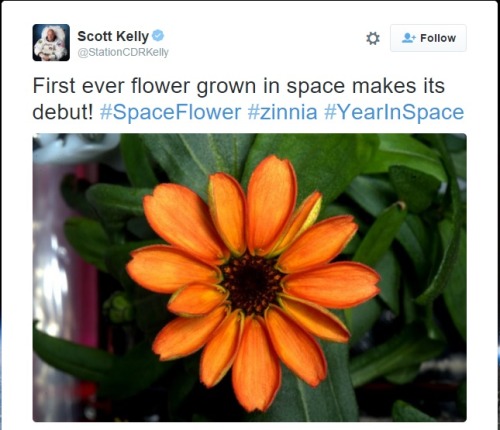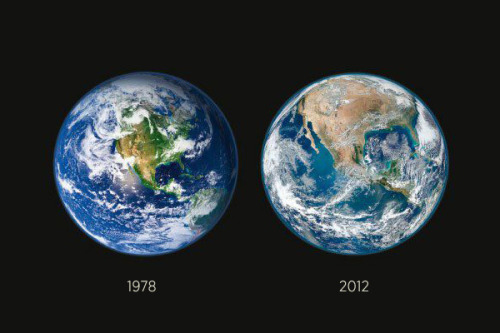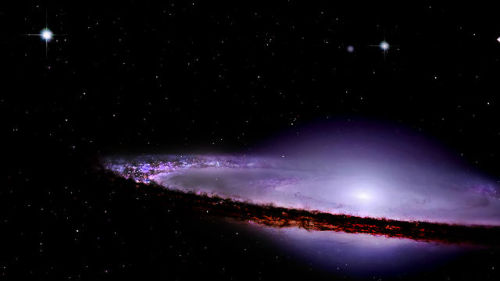A Montage Of The Carina Nebula





A Montage of the Carina Nebula
The Carina Nebula (known by astronomers as NGC 3372) is sometimes called the Great Nebula in Carina or the Grand Nebula. These images taken by the Hubble space telescope show the magnificent structure within the Carina Nebula. These images contain regions of dense star formation, interstellar winds, massive particle clouds and much more. Many of these structures are hundreds of light-years across and make the size of our solar system look pathetic in comparison. The Carine Nebula is about 10,000 light-years away from earth and is located in the constellation Carina.
Credit: NASA/ESA/Hubble
More Posts from Alitheastronomer and Others
This is incredible!



NGC 6302: The Butterfly Nebula from Hubble
via APOD
That video is fascinating, I can't stop watching it!
Blizzard 2016 from Space
As an intense winter storm approaches the mid-Atlantic this weekend, our satellites watch from above. The storm is expected to produce a wade swath of more than 2 feet of snow in some areas.

The below supercomputer simulation crunched the data to provide a look at the flow of clouds from storm systems around the globe, including the developing blizzard across the eastern United States.
This storm won’t only have a snowy impact on the mid-Atlantic region, but will also cause severe weather in the Gulf Coast. Satellites observe extreme rainfall in the area.

Data from NASA-NOAA Suomi NPP satellite and NOAA’s GOES-East satellite are being used to create images and animation of the movement of this powerful storm. For updates, visit: http://www.nasa.gov/feature/goddard/2016/nasa-sees-major-winter-storm-headed-for-eastern-us

Make sure to follow us on Tumblr for your regular dose of space: http://nasa.tumblr.com

Solipsism syndrome refers to a psychological state in which a person feels that the world is not external to his or her mind. Periods of extended isolation may predispose people to this condition. In particular, the syndrome has been identified as a potential concern for individuals living in space for extended periods of time.
(Fact Source) Follow Ultrafacts for more facts


Arp 87:
NGC 3808A (right) & NGC 3808B (left)

The stunning Sombrero galaxy (seriously, there should be a blog that’s just photos of the Sombrero galaxy)
An eclipse, caught from a plane.

-
 oxfordsonnets liked this · 4 years ago
oxfordsonnets liked this · 4 years ago -
 leonardo-kisser liked this · 4 years ago
leonardo-kisser liked this · 4 years ago -
 gingerscotty reblogged this · 4 years ago
gingerscotty reblogged this · 4 years ago -
 fox-and-camellia reblogged this · 5 years ago
fox-and-camellia reblogged this · 5 years ago -
 insekttt reblogged this · 5 years ago
insekttt reblogged this · 5 years ago -
 blue-velvet-motels reblogged this · 5 years ago
blue-velvet-motels reblogged this · 5 years ago -
 blue-velvet-motels liked this · 5 years ago
blue-velvet-motels liked this · 5 years ago -
 sarcasticfirehazard-blog liked this · 6 years ago
sarcasticfirehazard-blog liked this · 6 years ago -
 yuki13queen liked this · 6 years ago
yuki13queen liked this · 6 years ago -
 noodletortoise liked this · 6 years ago
noodletortoise liked this · 6 years ago -
 replicant1955 liked this · 6 years ago
replicant1955 liked this · 6 years ago -
 withoutideas23 reblogged this · 6 years ago
withoutideas23 reblogged this · 6 years ago -
 withoutideas23 liked this · 6 years ago
withoutideas23 liked this · 6 years ago -
 thebiggestbugking liked this · 6 years ago
thebiggestbugking liked this · 6 years ago -
 likesirensinshadows reblogged this · 6 years ago
likesirensinshadows reblogged this · 6 years ago -
 eltitiverde liked this · 6 years ago
eltitiverde liked this · 6 years ago -
 dabismiddlestaple liked this · 6 years ago
dabismiddlestaple liked this · 6 years ago -
 they-see-me-rolling-dice liked this · 6 years ago
they-see-me-rolling-dice liked this · 6 years ago -
 dearkurisu liked this · 6 years ago
dearkurisu liked this · 6 years ago -
 autopsy-mauve liked this · 6 years ago
autopsy-mauve liked this · 6 years ago -
 geksli73 liked this · 6 years ago
geksli73 liked this · 6 years ago -
 donttellmeimlessthanmyfreedom reblogged this · 6 years ago
donttellmeimlessthanmyfreedom reblogged this · 6 years ago -
 didderdoodlz liked this · 6 years ago
didderdoodlz liked this · 6 years ago -
 anddreamalittledreamofme liked this · 6 years ago
anddreamalittledreamofme liked this · 6 years ago -
 tauremornalome liked this · 6 years ago
tauremornalome liked this · 6 years ago -
 thetimijatheory liked this · 6 years ago
thetimijatheory liked this · 6 years ago -
 sevdolo liked this · 6 years ago
sevdolo liked this · 6 years ago -
 queencfthestars liked this · 6 years ago
queencfthestars liked this · 6 years ago -
 ichthyarchy liked this · 6 years ago
ichthyarchy liked this · 6 years ago -
 ghostlysilhoulette liked this · 6 years ago
ghostlysilhoulette liked this · 6 years ago -
 sehicks reblogged this · 6 years ago
sehicks reblogged this · 6 years ago